  2: Reducing a Fraction Fractions are reduced completely when they are changed to the smallest possible equivalent fraction by dividing. For example, here is a fraction, and its corresponding picture: 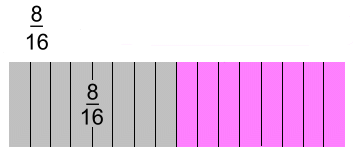
The fraction is '8 over 16', or '8 parts out of 16' or 'one half' The picture shows 8 parts out of 16 shaded grey. You can probably see that this represents half of the rectangle, or the fraction '1 over 2' We describe this by saying: "If you reduce the fraction 8/16 completely, you get the equivalent fraction 1/2" It's reduced completely because 1/2 can't be reduced any further. 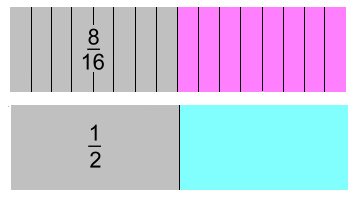
Here's how you reduce a fraction numerically: 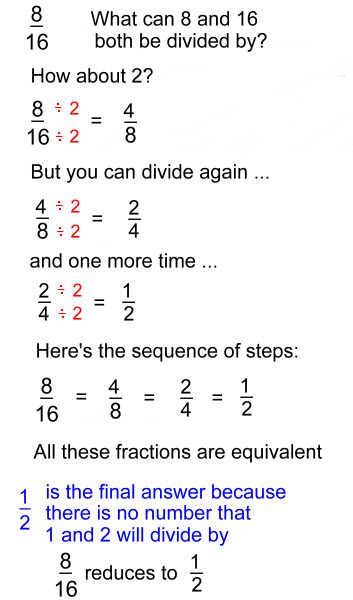 NOTE: We use 'divide' the same way we did when looking at divisibility rules. In other words, we mean 'divides evenly by' That was a lot of work. But there's a quicker way. As is usual in math, the more you know, the quicker you can answer a problem. For example: 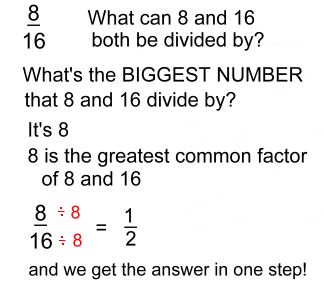
Here's another example: 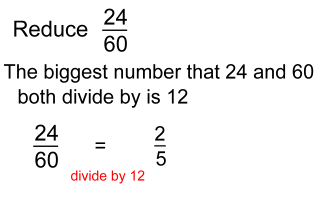
This is one more place where knowing the 'times tables' is very important! You don't necessarily have to find the greatest common factor. With larger numbers it may be quicker to just find any number that works, and keep dividing. And you don't always have to divide by the same number. For example: 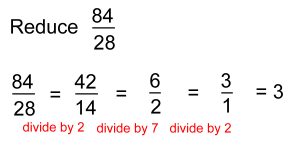
Try some yourself and check your answers ... |